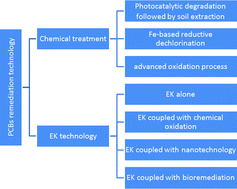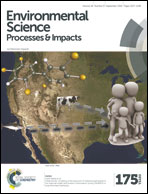Review of chemical and electrokinetic remediation of PCBs contaminated soils and sediments
Abstract
Polychlorinated biphenyls (PCBs) are manmade organic compounds, and pollution due to PCBs has been a global environmental problem because of their persistence, long-range atmospheric transport and bioaccumulation. Many physical, chemical and biological technologies have been utilized to remediate PCBs contaminated soils and sediments, and there are some emerging new technologies and combined methods that may provide cost-effective alternatives to the existing remediation practice. This review provides a general overview on the recent developments in chemical treatment and electrokinetic remediation (EK) technologies related to PCBs remediation. In particular, four technologies including photocatalytic degradation of PCBs combined with soil washing, Fe-based reductive dechlorination, advanced oxidation process, and EK/integrated EK technology (e.g., EK coupled with chemical oxidation, nanotechnology and bioremediation) are reviewed in detail. We focus on the fundamental principles and governing factors of chemical technologies, and EK/integrated EK technologies. Comparative analysis of these technologies including their major advantages and disadvantages is summarized. The existing problems and future prospects of these technologies regarding PCBs remediation are further highlighted.


 Please wait while we load your content...
Please wait while we load your content...